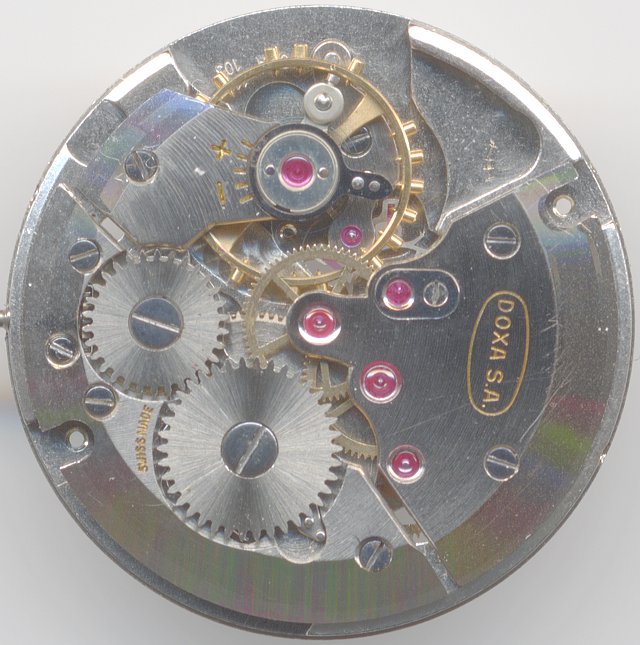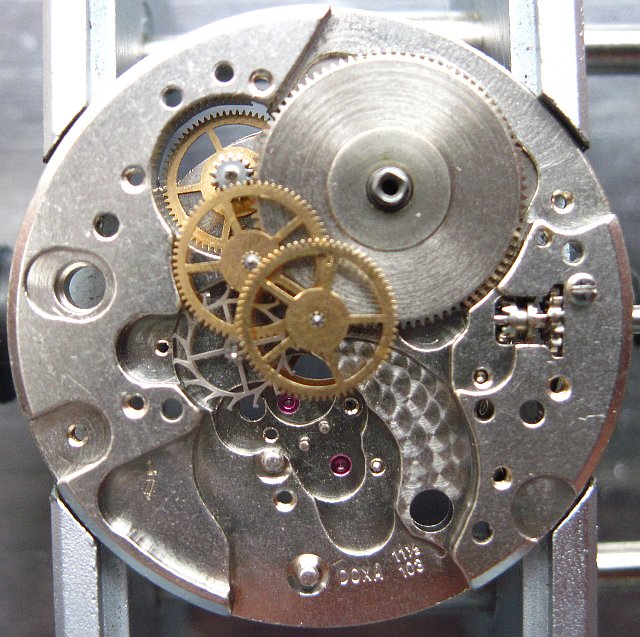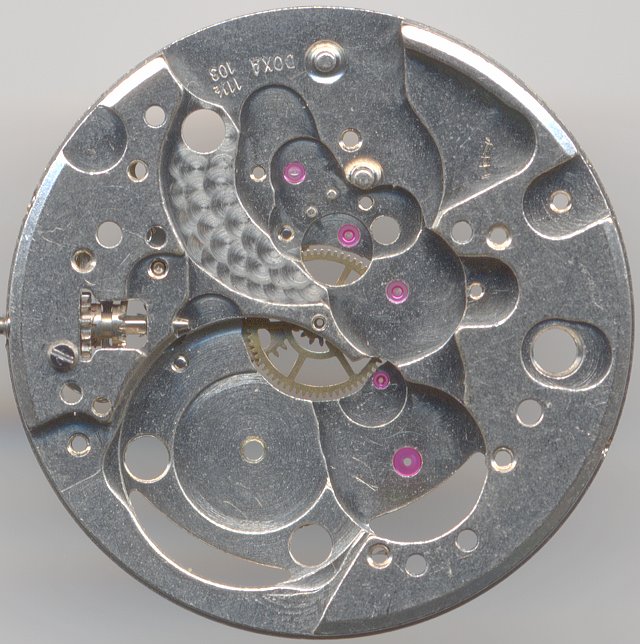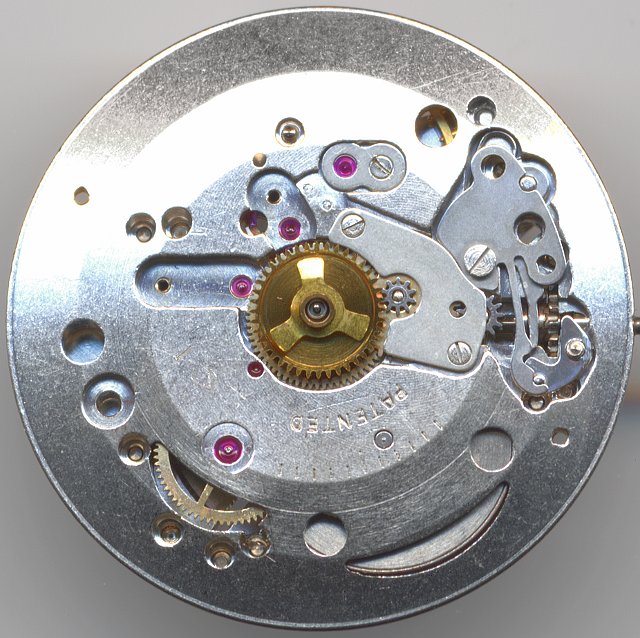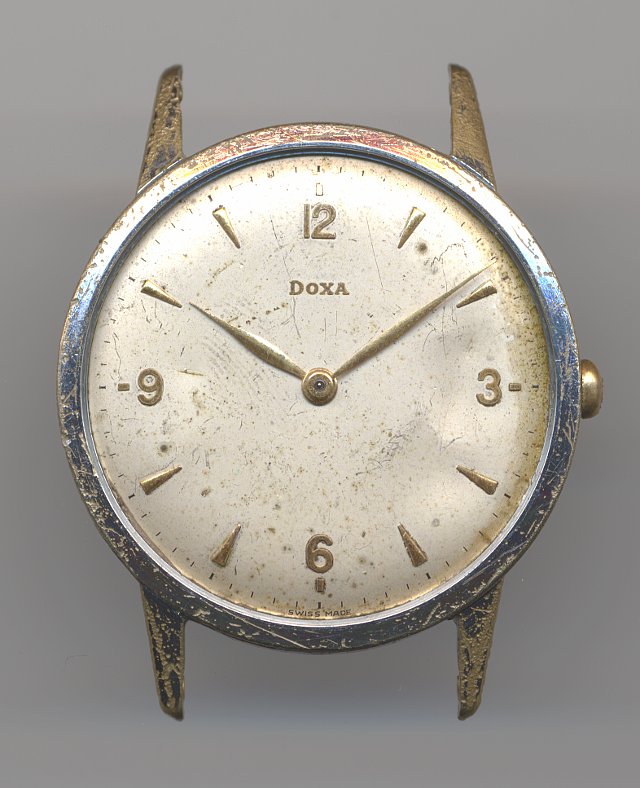Description
The Doxa 103 is a high quality swiss handwinding movement of 11 1/2 lignes, which bases on the ETA 2391.
Video on YouTubeYou can easily see, that the Doxa 103 bases on the ETA 2391, when you compare the inner workings. Their construction is identical, in both cases, the minute wheel is driven on the dial side via the third wheel. This wheel is driven by the fourth wheel with its thick axles and trains, which itself is driven by the mainspring barrel.
The center second is direcly driven. As you can see, the arrangement of the wheelworks is quite clever, using as few space, as possible. On the large 11 1/2 ligne main plate, there’s a lot of solid, unsed space, which is a result of the fact, that the ETA 2391 is nothing but an ETA 2390, where the main plate is extended from 10 1/2 to 11 1/2 lignes, while the rest stayes the same.
The golden toned Glucydur screw balance is not yet shock protected, but carries a blue Nivarox-I hairspring, whose end is connected to a moveable stud. Altogether this was among the best things, which were available on the (mass-)marked at that time.
Nevertheless, there’s a little downer: The Doxa 103 lacks any kind of find regulation, which means, that the effective length of the hairspring can be adjusted directly at the hairspring key only. This very cheap and crude mechanism does not fit into the picture of the otherwise high quality made regulation organ.
The Glucydur screw balance is a feast for the eyes!
On the dial side, there’s ETA everywhere: The yoke winding system, the second wheel which its visible teeth at “7” and the massive axles, the third wheel, which indirectly drives the minute wheel at position “7:30” and last but not least the ETA-typical spreading spring on the hour wheel, which prevents it from slipping on shocks.
The partial minute dial on the lower part of the dial side plate indicates, that this movement is pretty old, since it was used in times, when timegraphers were not yet avilable everywhere, and helped the regulator to adjust the movement without mounted dial.
Timegrapher result
The movement came completely gummed into the lab, sealed in a watch wreck (see below) and hence got a full service. Nevertheles, the movement has got a tiny problem: Since the gears are so near to each other and tend to "tumble" a bit, they tend to touch from time to time, slowing down the movement a tiny little bit. It's likely possible, that this problem originates from the bad treatment, it got over the years. On the timegrapher, which printed here in double precision, the movement performed not bad, but still far beyond its possibilities. While on the horizontal positions, the deviation is pretty low (at max. +15 seconds per day), three of the four vertical position show a bad performance, down to -45 seconds per day. It's quite possible, that this is due to the slightly "tumbling" gears. In the vertical positions, any gear will start tumbling, if no cap jewels are used. And if the gears are not 100% straight, you will see these problems. Unfortunately, the Doxa 103 lacks cap jewels, except one on the escapement wheel.
crown right (12 up)
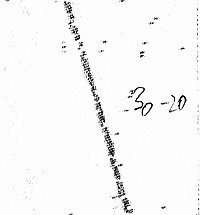
crown up (3 up)
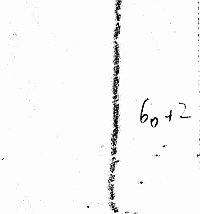
crown left (6 up)
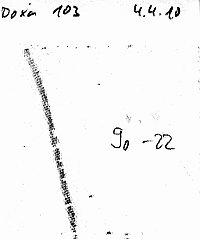
crown down (9 up)
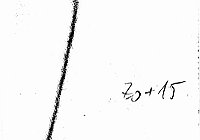
dial up
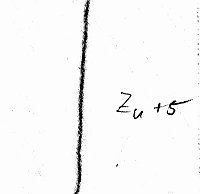
dial down
Technical data
| Manufacturer: | Doxa |
| Caliber: | 103 |
| Size: | 11 1/2''' (measured: 25,6mm) |
| A/h: | 18000 |
| Number of jewels: | 17 |
| Escapement: | Pallet lever |
| Balance types: |
Glucydur screw balance |
| Shock protection(s): |
none |
| Balance bearing / direction hairspring: | Clockwise |
| Moveable stud: | yes |
| Adjust mechanism: | Hairspring key |
| Construction: |
|
| Construction type: | solid construction |
| Winding mechanism: | yoke winding system |
| Setting lever spring: | 4 hole(s) |
| Features: |
|
| References: |
Flume: K2 - |
Usage gallery
Links
- Ranfft Uhren: ETA 2391 (the base ebauche, ETA 2391)
